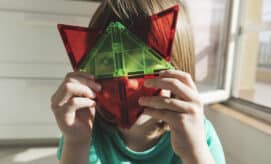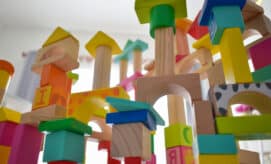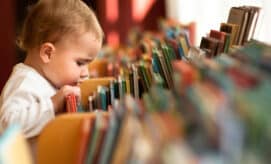This activity requires only chalk, an area of sidewalk, and a variety of natural materials, such as leaves, rocks, twigs, acorns, pinecones, etc. Start by drawing circles on the concrete and writing a number inside each circle. If you work with older children, you might encourage them to draw the shapes and practice writing their numbers.
Next, ask the children to place items within each circle in the quantity that corresponds to the number written inside that circle. This activity helps children to practice one-to-one correspondence and counting. You might also help children sort the items, putting leaves in one circle, or rocks in another circle. Sorting helps children practice classification and categorization.









